Why Website Speed is Critically Important in Today’s World?
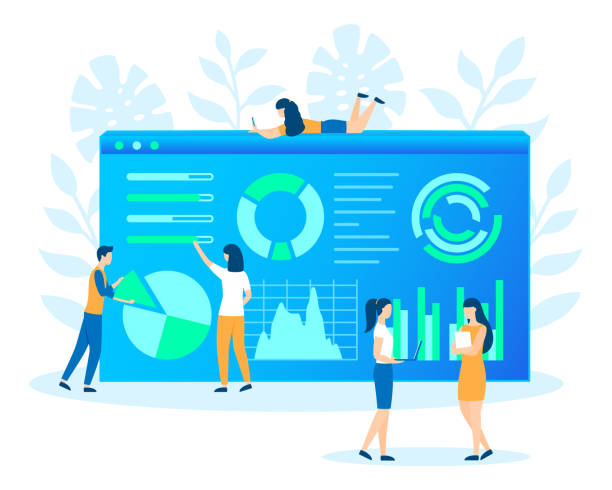
In today’s fast-paced digital world, #website_loading_speed is no longer considered an advantage, but a necessity.
Internet users have little patience, and studies have shown that even a one-second delay in page loading can lead to a significant decrease in conversion rates and customer satisfaction.
Fast website design not only significantly improves user experience (UX) but also directly impacts your website’s ranking in search engines.
Google and other search engines consider speed as a crucial factor in their ranking algorithms.
It’s an #analytical and #news fact that businesses neglecting #website_speed_optimization lose a large portion of potential traffic and customers.
Imagine a user visiting your site and having to wait a few seconds for the content to load; there’s a high probability they will leave before the page fully displays.
This issue is particularly important in the current era where high-speed internet access is not uniform everywhere, and many users browse the web via mobile with more limited internet connections.
Therefore, any plan for #fast_web_development must include comprehensive strategies for performance and speed improvement to ensure your website is not only user-friendly but also ranks high in search results.
This #explanatory section highlights the fundamental importance of website speed for survival and growth in the online space.
Frustrated with your e-commerce site’s low conversion rate? Rasaweb transforms your e-commerce site into a powerful tool for customer acquisition and conversion!
✅ Significant increase in visitor-to-buyer conversion rate
✅ Unparalleled user experience to boost customer satisfaction and loyalty⚡ Get free consultation from Rasaweb!
Key Factors Affecting Website Loading Speed
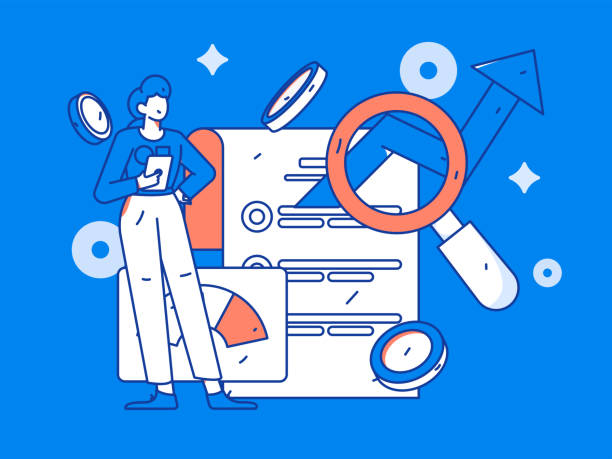
To achieve fast website design, it’s essential to understand the factors that affect loading speed.
One of the most important factors is the overall page size, which includes the size of images, CSS files, JavaScript, and HTML.
If these files are not optimized, they can significantly increase loading time.
Hosting quality and type also play a vital role; a cheap shared hosting that provides limited resources to your website can easily cause severe slowdowns.
The number and quality of HTTP requests are also crucial factors.
The more files the browser needs to fetch from the server to display a page, the longer it takes.
Additional plugins and scripts, especially if not optimized or if they cause conflicts, can impose an extra burden on the server and browser, reducing site speed.
This is a #technical issue that requires careful examination.
Furthermore, the lack of server-side and browser-side caching means that every time a user visits a page, all content is loaded from scratch.
These complex factors combine to determine a website’s loading speed, and for #building_a_fast_website, each of them must be considered.
In the following sections, we will delve into each of these factors and their corresponding solutions in a #guidance format and with more detail, so you can optimize your site’s loading speed in the best possible way.
Website Speed Optimization Tools and Techniques

To achieve the goal of fast website design, numerous tools and techniques must be examined in an #educational and #technical manner.
Using tools like Google PageSpeed Insights, GTmetrix, and Pingdom Tools helps you identify existing issues with your site’s speed.
These tools provide detailed reports, including performance scores, improvement suggestions, and details on the loading times of various resources.
One of the most important techniques is file compression (Gzip compression) and minifying CSS, JavaScript, and HTML.
This reduces file sizes and, consequently, decreases loading time.
Lazy Loading for images and videos is also a very effective technique; it means these media are only loaded when they enter the user’s viewport.
| Optimization Technique | Description | Effect on Speed |
|---|---|---|
| Browser Caching | Stores files in the user’s browser for subsequent visits | Significantly reduces loading time for recurring visits |
| Image Optimization | Compressing and resizing images without quality loss | Reduces overall page size and initial loading speed |
| Using a CDN | Distributes content from the closest server to the user | Reduces latency and increases global speed |
This is a practical #guidance that shows how to move step-by-step towards fast website design with an #analytical approach.
Correct implementation of these techniques lays the foundation for a high-speed website.
For a deeper understanding of each of these, you can refer to specialized #educational resources.
Choosing Suitable Hosting and CDN for Performance Improvement
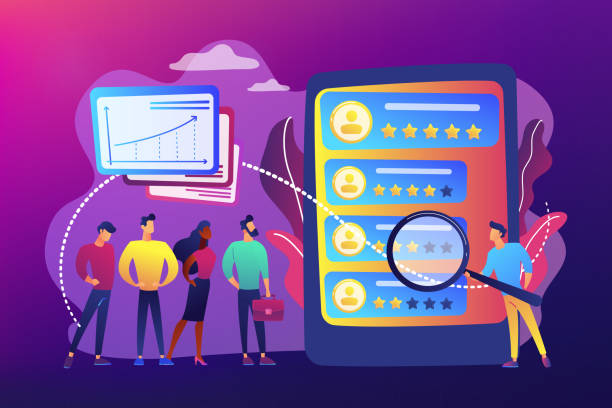
Choosing suitable hosting and using a Content Delivery Network (CDN) are among the most important steps towards fast website design.
Your hosting is the home where your website lives, and its quality directly affects your site’s speed and stability.
Cheap shared hostings, while suitable for starting, usually have limited resources and lead to speed reduction as traffic increases.
For websites seeking high performance, VPS (Virtual Private Server), Cloud Hosting, or Dedicated Server options are better choices.
These hostings offer more dedicated resources and give you greater control over the server environment.
Alongside hosting, CDN is an excellent tool for building a high-speed website.
A CDN is a network of servers distributed across different geographical locations.
When a user accesses your website, the CDN delivers the content from the server closest to that user.
This significantly reduces latency and loading time, especially for users accessing your site from farther geographical locations.
This is an #explanatory approach to the importance of CDN.
Companies like Cloudflare, Akamai, and Amazon CloudFront are among the most famous CDN providers.
Using a CDN not only increases speed but also improves your website’s security by distributing the load.
This vital #guidance helps you provide the necessary infrastructure for a fast website design and create a better user experience for your visitors.
This is a #technical choice that should be made carefully and based on your website’s needs.
Worried about losing customers because you don’t have a professional e-commerce site?
With e-commerce website design by Rasaweb, forget these worries!
✅ Significant increase in sales and visitor-to-customer conversion rate
✅ Professional and user-friendly design that builds customer trust
⚡ Get free consultation!
Optimizing Images and Videos for Speed Increase
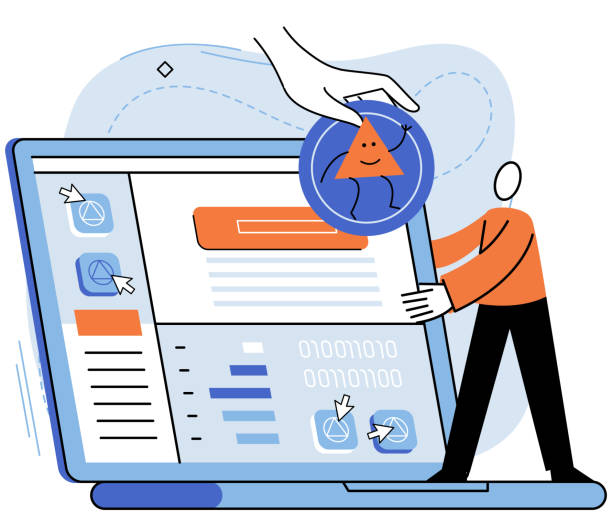
One of the biggest reasons for website slowdowns is the large size of images and videos.
Optimizing these media is an essential step in fast website design.
Large, high-quality images, if used without compression and optimization, can occupy a significant portion of the page loading time.
The first step is to use appropriate formats: WebP is highly recommended for web images as it offers excellent compression while maintaining quality, whereas JPEG is more suitable for photos and PNG for images with transparency.
The next step is resizing images to the actual required dimensions on the page.
Often, web designers upload images with much larger dimensions than what is displayed on the site.
Using online tools or image compression software like TinyPNG or Compressor.io can help you reduce image file sizes without noticeable quality loss.
For videos, using platforms like YouTube or Vimeo and embedding codes instead of directly uploading videos to your server is recommended.
These platforms handle video playback optimization and offload the burden from your server.
Also, the use of Lazy Loading for images and videos, as mentioned in previous sections, is highly recommended.
This is practical #guidance that helps you achieve a more optimal loading speed and take steps towards fast website design.
This #technical approach will significantly impact the improvement of your user experience and overall site speed, preventing unnecessary slowdowns.
Code Optimization (HTML, CSS, JavaScript) and Removing Unused Resources

Optimized coding is the cornerstone of fast website design.
Every extra or unnecessary line of code can add to your site’s loading time.
Minification of HTML, CSS, and JavaScript files means removing whitespace, comments, and any unnecessary characters from the code.
This reduces file sizes and causes the browser to process them faster.
This is a #technical technique that many web optimization tools perform automatically.
In addition to minification, file concatenation can also be useful.
For example, if you have several small CSS or JavaScript files, you can merge them into a larger one.
This reduces the number of HTTP requests and consequently increases loading speed.
However, it should be noted that in the world of HTTP/2 and HTTP/3, this technique is less critical than before, as these protocols allow for parallel loading of multiple files.
Removing Unused CSS and JavaScript is also of high importance.
Many themes and plugins load a lot of CSS and JS code that is not actually needed to display the current page.
These extra resources only cause slowdowns.
Using tools like Coverage in Chrome DevTools can help you identify and remove unused code.
This is an #analytical process that requires precision.
Asynchronous loading or deferring JavaScript is also an effective technique; this allows the browser to display the main content of the page before fully loading the scripts and move towards fast website design.
This is a comprehensive #explanation of how to optimize code, which significantly impacts your website’s performance.
The Impact of Plugins and Themes on Site Speed and How to Manage Them

Plugins and themes play a very important role in website performance and speed, especially in Content Management Systems like WordPress.
While these tools add numerous functionalities to your site, they can severely negatively impact its speed and be an obstacle to fast website design.
Every plugin and theme adds new CSS, JavaScript, image, and HTTP requests to the website.
If these are not optimized or if their number is high, they can increase the server load and drastically slow down page loading time.
To manage this impact, the first step is to choose lightweight and optimized plugins and themes.
Before installing any plugin, check user reviews, regular updates, and its compatibility with the latest WordPress versions.
Avoid installing unnecessary plugins and delete any plugin you don’t use, even if it’s deactivated.
| Factor | Description | Impact on Speed |
|---|---|---|
| Number of Plugins | Increasing the number of plugins without actual need | Increases HTTP requests and processing load |
| Plugin/Theme Code Quality | Optimized and lightweight, or heavy and unoptimized coding | Direct impact on page processing and rendering speed |
| Updates | Keeping updated or not updating | Increases security and performance, or creates vulnerabilities and reduces speed |
Caching plugins like WP Super Cache or LiteSpeed Cache can largely help compensate for the extra load.
This is a #technical #guidance that helps you intelligently manage and benefit from plugins while continuing to build a high-speed website.
This is often questionable_content regarding how many plugins are considered too many; the answer is that quality is more important than quantity.
Responsive Design and Its Impact on Mobile Speed
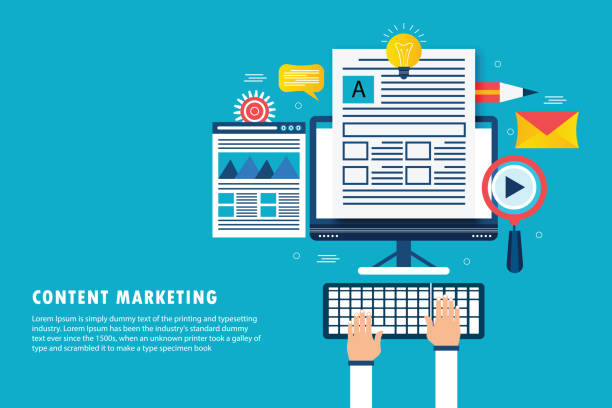
In today’s world, where a significant portion of internet traffic occurs via mobile devices, responsive design is crucial not only for user experience but also for mobile website loading speed.
A responsive website means a website that automatically adapts to the user’s screen size (whether desktop, tablet, or mobile).
But this adaptability must be accompanied by a fast website design approach.
The main challenge in responsive design and mobile speed is the volume of data and resources that need to be loaded.
Many websites, even in their mobile version, load all the resources required for the desktop version.
This includes large images, extra CSS, and JavaScript codes that are not used in the mobile view.
This is a significant factor for slowdowns and can be a serious obstacle on the path to website_speed_optimization.
To optimize mobile speed, Mobile-First Design techniques should be used.
This means that design and development are first done for mobile devices and then gradually scaled up for larger screens.
This approach means loading only the resources needed for each device.
Image optimization (using responsive images or WebP), minifying codes, and using caching on mobile are also of high importance.
Furthermore, Google’s Core Web Vitals (which include Largest Contentful Paint (LCP), First Input Delay (FID), and Cumulative Layout Shift (CLS)) are very important for mobile user experience and SEO ranking.
This is an important #analytical and #news item for anyone looking to build a high-speed website.
Ensuring excellent mobile performance means guaranteeing access and satisfaction for a large segment of your users and is a key step in fast website design.
Did you know that customers’ first impression of your company is your website? Multiply your business’s credibility with a powerful corporate website from Rasaweb!
✅ Custom and eye-catching design tailored to your brand
✅ Improved user experience and increased customer acquisition
⚡ Get free consultation!
Continuous Monitoring and Optimization of Website Speed
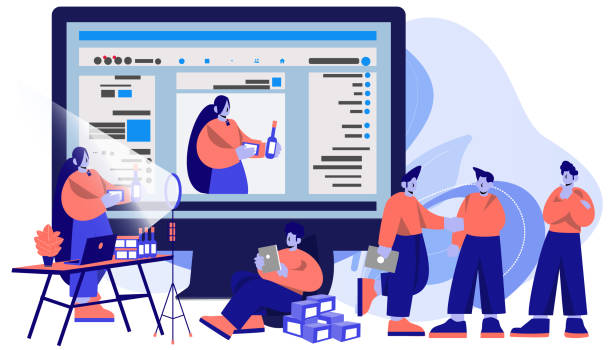
After implementing all fast website design techniques, the work is not over.
Website speed is not a static process; it requires continuous monitoring and optimization.
With continuous browser updates, changes in search engine algorithms, the addition of new content to your site, and changes in visitor traffic, site performance can also change.
This is a #technical and #educational aspect that every website manager should pay attention to.
Regular use of tools like Google PageSpeed Insights, GTmetrix, and Lighthouse is essential for periodically checking site speed and identifying new issues.
These tools can alert you about resources that have recently slowed down or new errors affecting performance.
Also, server monitoring and using server monitoring tools can help you identify issues related to hosting, unusual traffic, or high resource consumption.
Setting alerts for sudden drops in speed or server response time allows you to react quickly to issues.
Continuous optimization includes checking and removing old and unused plugins or themes, updating the Content Management System (CMS) and all plugins and themes to the latest stable versions, and compressing newly added content (images and videos).
This process is continuous #guidance for maintaining a fast website design and providing a flawless user experience.
With an #analytical approach, problems can be identified and resolved before they become major issues.
This is a continuous cycle of improvement that helps you always stay at the top.
The Impact of Site Speed on User Experience and SEO

Website speed not only affects user satisfaction but is also a crucial factor in improving site ranking in search engines (SEO).
In fact, fast website design is a long-term investment in your online success.
When a website loads quickly, users experience a better user experience (UX).
This means a lower Bounce Rate, longer Dwell Time on the site, and an increased Conversion Rate.
Users are more likely to return to a fast website and interact more with it.
This is an #entertaining yet vital aspect of website improvement.
From an SEO perspective, Google has explicitly stated that page speed is a ranking factor, especially with the introduction of Core Web Vitals.
Slow websites may rank lower in search results than their faster competitors, even if they have high-quality content.
Search engines aim to provide the best possible experience to their users, and a slow site does not offer a good experience.
Furthermore, loading speed also affects the ability of search engine bots to crawl and index your pages.
A slow site can cause bots to visit your site less frequently, resulting in your new pages being indexed later.
Ultimately, the impact of fast website design goes beyond numbers; it means building a strong brand, increasing customer trust, and creating a sustainable competitive advantage.
The questionable_content here is whether one can succeed with just good content? The unequivocal answer is no, speed is also an integral component.
This is a final #explanation of the importance of speed, showing why it should be treated as a priority and why there are no shortcuts on the path to fast website design.
Frequently Asked Questions
| Question | Answer |
|---|---|
| What is fast website design? | It refers to the process of building a website with high loading speed, optimized for excellent performance. |
| Why is website speed important? | Website speed directly affects user experience, conversion rates, SEO, and search engine rankings. |
| What are the factors affecting website speed? | Image size, optimized coding, CDN usage, caching, suitable hosting choice, and number of plugins. |
| How can website loading speed be increased? | Optimizing images, compressing files (CSS, JS, HTML), using browser caching, reducing redirects, and using a CDN. |
| What is a CDN and how does it help website speed? | A Content Delivery Network that stores your website’s content on various geographical servers and delivers it from the closest server to the user. |
| What is the role of hosting in website speed? | The quality and type of hosting (shared, VPS, dedicated) greatly influence server response time and, consequently, website loading speed. |
| Does using too many plugins reduce website speed? | Yes, each plugin loads additional code that can lead to site slowdowns. Choosing optimized and essential plugins is recommended. |
| How is image optimization done to increase website speed? | Compressing images without quality loss, using modern formats (WebP), setting correct dimensions, and Lazy Loading. |
| How does Caching help website speed? | Caching helps temporarily store website content in the user’s browser or on the server so that the site loads faster on subsequent visits. |
| What are the best tools for checking website speed? | Google PageSpeed Insights, GTmetrix, and Pingdom Tools are among the common and practical tools for analyzing and improving website speed. |
And other advertising services of Rasaweb Advertising Agency
Smart UI/UX: A creative platform for improving click-through rates with attractive user interface design.
Smart Data Analysis: A fast and efficient solution for increasing click-through rates with a focus on custom programming.
Smart Social Media: An innovative service for increasing customer behavior analysis through intelligent data analysis.
Smart SEO: A combination of creativity and technology to increase sales by customizing the user experience.
Smart Brand Identity: An effective tool for analyzing customer behavior through precise audience targeting.
And over hundreds of other services in internet advertising, advertising consultation, and organizational solutions
Internet Advertising | Advertising Strategy | Advertorials
Resources
- Website Speed Optimization
- Fast Website Design Guide
- Website Performance Best Practices
- SEO and Website Speed
? With Rasaweb Afarin, your business gains new life in the digital world. With expertise in secure website design, search engine optimization (SEO), and online advertising campaign management, we are with you on the path to success.
📍 Tehran, Mirdamad Street, next to Bank Markazi, Southern Kazerun Alley, Ramin Alley, No. 6




